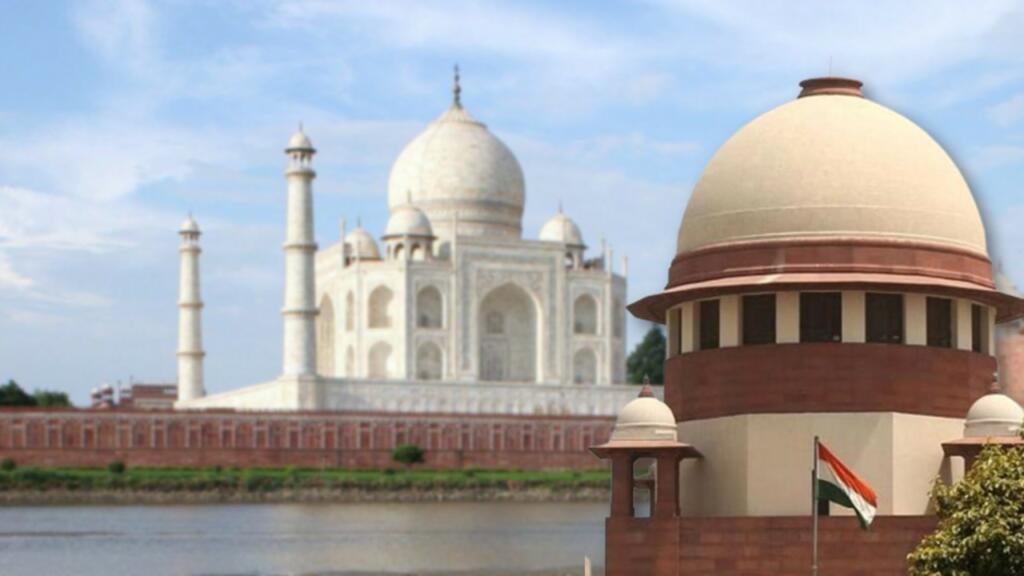Nature is not beholden to us; thus, it falls upon us to preserve it. Safeguarding the earth for future generations is not a luxury, but an indispensable duty. The Taj Trapezium Zone stands as a beacon of our unwavering commitment to uphold not merely the Taj Mahal, but also the cultural richness and environmental verdure of the region.
The 10,400 sq km zone was devised as a rampart against pollution and encompasses numerous World Heritage Sites, such as Agra Fort and Fatehpur Sikri.
Supreme Court Favors Commerce: Green Issues Fall to the Wayside
The preservation of the environment and cultural legacy has been a long-standing matter of concern in India, with the Taj Trapezium Zone being a shining example of the judicial system’s efforts to address these issues. The establishment of the zone was the result of the initial of several cases brought before the Supreme Court, with the aim of safeguarding the Taj Mahal and its surroundings.
The first of these cases, M.C. Mehta v. Union of India (1984), was instrumental in the creation of the Taj Trapezium Zone and the implementation of measures to combat air pollution in the area. In 1996, a Public Interest Litigation (PIL) led to the Supreme Court’s ban on the use of coal and coke in industries within the TTZ in M.C. Mehta v. Union of India (1996).
In 2020, the Supreme Court lifted its ban on construction, industrial activities, and tree felling in the Taj Trapezium Zone in M.C. Mehta v. Union of India (2020) case, allowing industrial units that comply with regulations and receive a No Objection Certificate from the Ministry of Environment to operate.
These cases showcase the significance of environmental protection and the judiciary’s role in preserving India’s cultural heritage and natural resources. In recent developments, the Supreme Court has authorized an increase in air traffic in Agra, lifting the restrictions imposed in 2019, thereby underlining the ongoing attention given to the Taj Trapezium Zone.
Also read: Protecting the Accused: The Concept of Double Jeopardy in India
Current Developments in M.C. Mehta v. Union of India (2023)
Recently, the Supreme Court lifted a restriction on increasing air traffic in the Agra area in the case M.C. Mehta v. Union of India (2023). The restriction was put in place in December 2019 to protect the Taj Mahal, but was removed after an application by the Airport Authority of India (AAI).
The bench, composed of Justices Sanjay Kishan Kaul, Abhay S. Oka, and JB Pardiwala, allowed the application after being satisfied with the studies undertaken by the AAI and the Indian government, and the requirement of the hour to invest in the airport.
The bench made it clear that all necessary permission, including from the CEC, must be obtained to increase traffic. The bar on aircraft flying over the Taj and other monuments remains in place.
Also read: The legal fallout of Shanti Bhushan’s legacy
Shopkeeper Rehabilitation at the Forefront
Furthermore, the Supreme Court ordered the state of Uttar Pradesh to consider rehabilitation for shopkeepers within the Taj Trapezium Zone. The order was made while hearing interim applications filed to protect the monument and relocate nearby shops. The applications were accompanied by requests from the shopkeepers for rehabilitation.
The state opposed the applications, claiming the rehabilitation scheme had lapsed. The Court rejected this argument, stating the issue of rehabilitation cannot be ignored just because the scheme has lapsed. The Court ordered the state to consider how to implement rehabilitation in consultation with the Urban Development Authority, and submit a report within 8 weeks.
Also read: Love, Lies and Consent: The Marital Promise Conundrum
M.C. Mehta v. Union of India (2023): A Paradigm Shift in approach
The Supreme Court’s verdict in the Taj Trapezium matter (2023) highlights the delicate balance that must be struck between environmental protection and development. The Court’s order to consider the rehabilitation of shopkeepers within the zone shows that it recognizes the human aspect of these issues, as well as the need for the region to adapt to changing times.
However, the ruling also seems to prioritize infrastructure development over environmental concerns, underscoring the important role of the judiciary in ensuring a fair balance between the two. The Court’s ruling serves as a reminder of the need for all parties involved to work together to achieve sustainable development that takes into account both environmental and human considerations.
Support TFI:
Support us in strengthening the “right” ideology of cultural nationalism by purchasing the best quality garments from TFI-STORE.COM.
Also Watch:
https://www.youtube.com/watch?v=93c80rQNAXg
